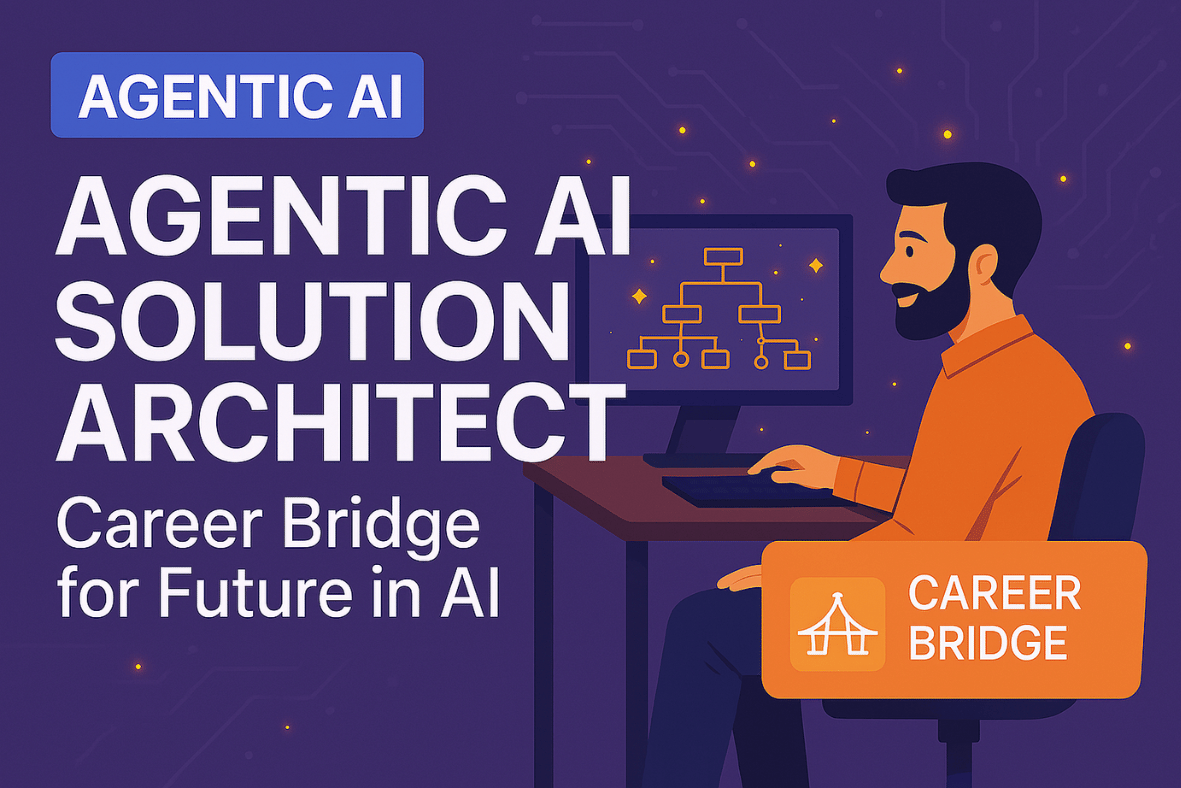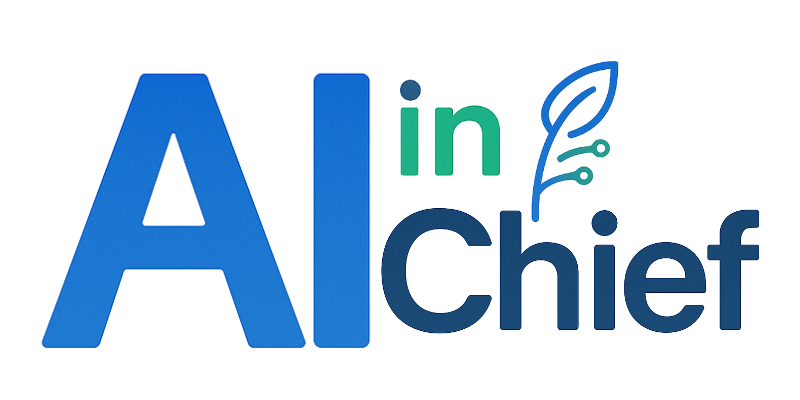Agentic AI Solution Architect's Career Bridge for Future in AI
A new kind of architect is needed—one who can design, orchestrate, and deploy the agentic ecosystems. Enter the Agentic Solution Architect—a key role at the frontier of AI innovation.

🧠 A Successful Agentic Solution Architect
A successful Agentic Solution Architect understands not only large language models (LLMs) but also how to wrap them into agentic workflows—AI systems that can perceive, decide, and act with minimal human intervention.
They blend deep technical insight with system-level thinking to build AI agents that are useful, safe, and reliable in real-world applications.
📘What You Will Learn
In this article, you’ll explore:
- What the Agentic Solution Architect actually does
- Why this role is the next evolution in AI solution design
- Tools, frameworks, and systems you must know
- How to showcase your fit for the role - even if you're just starting
- Interview prep strategies, from 1 hour to 4 weeks
🚀 Why This Role Matters in the AI Future
AI agents are moving beyond chatbots. They now browse the web, interact with APIs, operate tools, and handle end-to-end tasks. From autonomous research agents to multi-agent workflows in enterprise ops - AI is becoming agentic.
The Agentic Solution Architect is crucial because they:
- Orchestrate LLMs, tools, and environments into functional agents
- Ensure reliability, cost-efficiency, and security of autonomous workflows
- Translate ambiguous business needs into intelligent agent designs
- Own the agent's lifecycle - design, deploy, monitor, retrain
Without this role, agentic AI risks becoming ungovernable or stuck in lab prototypes.
✅ Key Success Factors for Agentic AI Architects
- Autonomous System Design: Understand multi-step planning, memory, and decision-making
- Model + Tool Integration: Blend LLMs with tool use (API calling, function execution)
- Guardrails & Monitoring: Build in feedback loops, ethical constraints, and observability
- Task Decomposition: Break down high-level goals into executable sub-tasks
🧩 Key Responsibilities
An Agentic Solution Architect typically:
- Designs agent-based systems using frameworks like LangGraph, CrewAI, AutoGen
- Selects the right base models (open or proprietary) and agent types (reactive, planning, multi-agent)
- Implements toolchains and action libraries for agents (file systems, APIs, search, databases)
- Ensures traceability, debuggability, and safe behavior of agents
- Collaborates across data, infra, product, and compliance teams
🧠 Capabilities You Need to Succeed
Technical Depth:
- Knowledge of LLMs, embeddings, tokenization, tool-using agents
- Architecting asynchronous and event-driven workflows
- Understanding of function calling, memory management, and planning algorithms
Platform Awareness:
- Experience with LangGraph, AutoGen, CrewAI, AgentOps
- Comfort with vector stores, retrieval strategies, and agent frameworks
Systems Thinking:
- Building agents as composable services
- Monitoring, logging, and tuning for performance and security
- Designing fallback systems and fail-safes for agent behavior
Soft Skills:
- Product thinking, problem decomposition, and storytelling
- Collaboration with engineering, product, and AI research teams
🛠️ Top Tools to Learn and Crack the Interview
| Area | Tools/Frameworks |
|---|---|
| Agent Frameworks | LangGraph, AutoGen, CrewAI, ReAct, AutoGPT |
| LLMs & APIs | OpenAI Function Calling, Claude, LLaMA, HuggingFace |
| Retrieval & Memory | LangChain, LlamaIndex, ChromaDB, FAISS, Weaviate |
| Planning & Execution | TaskWeaver, BabyAGI, Haystack Agents |
| Monitoring | AgentOps, PromptLayer, LangSmith |
| Deployment | FastAPI, Streamlit, Docker, Kubernetes |
📝 Top Keywords for Your CV
Be sure to sprinkle in relevant keywords like:
- “Agentic AI architecture and orchestration”
- “Multi-agent systems design”
- “LLM-powered autonomous task execution”
- “Agent framework deployment (AutoGen, CrewAI)”
- “Tool-using AI agents with LangGraph/Function Calling”
- “Secure, observable, and reliable AI agents”
- “Task decomposition and reasoning with ReAct pattern”
📣 Don’t Have the Experience Yet?
🚀 We got you.
Join our internship program where you'll design and deploy your own AI agent using leading frameworks and real-world datasets. Mentorship, project reviews, and resume help included!
⏱️ Only 1 Hour to Prepare? Do This:
- Understand the concept of agentic AI vs traditional LLM apps
- Read a breakdown of LangGraph or AutoGen architecture
- Review the ReAct pattern and how agents plan-act-observe
- Know how function calling works in OpenAI or Claude
- Prepare 1 use case and system design diagram of an agent system
📅 Have More Time? Your Prep Plan
🕐 1 Day Plan
- Watch a LangGraph or CrewAI tutorial
- Build a mini-agent that answers questions using a tool
- Update your resume with Gen AI + agent keywords
📘 1 Week Plan
- Build a full agent system: e.g., autonomous research bot or email assistant
- Implement memory and retrieval
- Add observability using PromptLayer or LangSmith
🚀 4 Weeks Mastery
- Build a multi-agent system with collaboration between agents
- Write about your experience on Medium or LinkedIn
- Explore evaluation metrics for agent performance and behavior
- Join a community like [AutoGen Discord] or [LangChain forums]
✨ Final Thoughts
The Agentic Solution Architect is one of the most exciting new roles in AI - blending deep model knowledge with system design and intelligent autonomy.
If you're looking to be at the cutting edge of AI systems that think, plan, and act, this is your moment.
🔥 Want to break into this role? Apply for our internship and build your first agent-based solution today.
Let’s build the future of AI - together.

